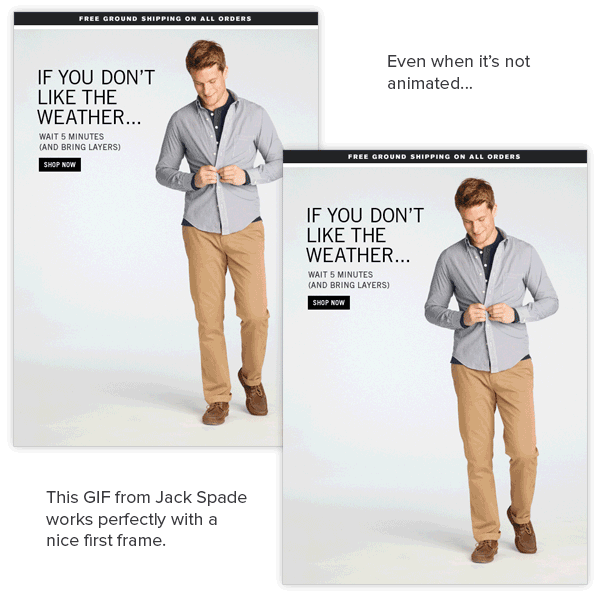Twitter just announced they’ll allow animated GIFs on Twitter.com, iPhone, and Android.


Why Animated GIFs Belong in Your Content Marketing Mix by @andrewjcoate
Despite the tweet above, I greeted this announcement with a shoulder shrug. “After all,” I reasoned, “Twitter’s late to the game on this one.” Animated GIFs are widely a part of pop culture—regularly used in blog posts and emails—and have been supported on other social media platforms like Tumblr and Pinterest for a while now.
Twitter had already supported the ability to play YouTube videos and SlideShares directly on timelines, so what took so long to allow animated GIFs? I didn’t really view this as much of a news item when my Senior Managing Editor Anne Murphy suggested we write a post about it.
But then she demanded it, and here I am.

Animated GIFs Are Visual Content
The importance of visual content cannot be understated. We live—and market in—an age of ever-increasing competition for ever-decreasing attention spans. Study after study shows captivating imagery leads to better engagement. According to an ongoing research survey conducted by Software Advice and Adobe, images are the most important factor in optimal social media content.

Not an animated GIF, I know. You’re super sad about it.
This isn’t new information, however.
Over the past 3 years, social platforms like Facebook and Twitter have been continually making improvements to become more visual. This comes as a result of increased competition from other image-centric social sites such as Pinterest, Tumblr, and Google+. LinkedIn even got in on the action, purchasing the visually focused SlideShare in 2012. A recent study by Citrix even noted that 63% of social media is now made up images.

Motion Mixes Things Up
“If a picture is worth a thousand words, a GIF is worth 10,000.”
What makes animated GIFs better than normal images? Their power lies in their ability tell a more dynamic story than a still picture. A photo of can hint at action happening, while an animated GIF can actually display it. Joe Puglisi, Senior Creative Strategist, Buzzfeed puts it this way:
“If a picture is worth a thousand words, a GIF is worth 10,000. GIFs are a mini-vehicle for storytelling, capturing emotions, and communicating them in a concise way that words and pictures alone cannot.”
For example, a picture of this bear looking at school children is not that interesting.



GIFs Aren’t Just Goofy
I’ll admit, I mostly use animated GIFs in a somewhat humorous context. At Kapost, we celebrate individual and team accomplishments with a hearty round of GIF-filled emails from all departments. Prior to Twitter’s update, I would still link to animated GIFs in fun responses to followers.
But as the Salesforce graphic demonstrates above, there are many ways to use animated GIFs in your content marketing that don’t involve dancing bears.
Brands are already getting creative in a variety of areas..
…from blog posts…

Uberflip often animates their blog post header images.
…to email marketing…

…to product demos or how-tos.


Now if you’ll excuse me, I have to go boogie board down a giant slip-n-slide and shoot a basketball into a hoop on my friend’s boat.
You know what? It’s easier if I just show you.

Get More Tips and Tricks
Sign up for our weekly newsletter to get the latest best-in-class marketing strategies delivered right to your inbox.

